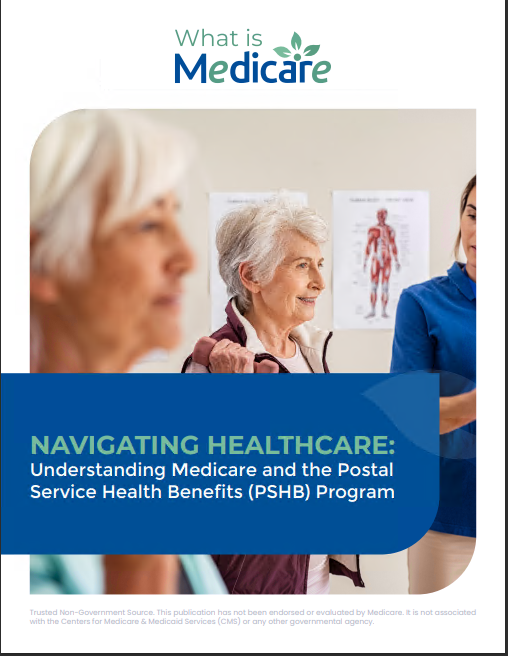What is Medigap?
Introduction: Bridging the Gaps in Medicare Coverage with Medigap
Medicare provides valuable healthcare coverage for millions of Americans, but it doesn’t cover all healthcare expenses. That’s where Medigap comes in. Medigap, also known as Medicare Supplement Insurance, is designed to fill the gaps in Medicare coverage by helping beneficiaries pay for certain out-of-pocket costs, such as deductibles, coinsurance, and copayments. In this guide, we’ll explore what Medigap is, how it works, and how beneficiaries can leverage it to enhance their Medicare coverage and financial protection.
Medigap is a type of private health insurance that helps pay for some of the healthcare costs that Original Medicare (Part A and Part B) doesn’t cover. These costs may include deductibles, coinsurance, and copayments, as well as certain services not covered by Medicare. Medigap plans are sold by private insurance companies and are standardized by the federal government, meaning that each plan offers the same basic benefits, regardless of the insurance company selling it.
The primary benefits of Medigap plans include:
- Coverage of Medicare Deductibles: Many Medigap plans cover Medicare Part A and Part B deductibles, which can help beneficiaries save money on out-of-pocket expenses when accessing healthcare services.
- Coinsurance and Copayment Coverage: Medigap plans may also cover coinsurance and copayments for Medicare-covered services, reducing beneficiaries’ financial burden for medical care.
- Coverage for Excess Charges: Some Medigap plans provide coverage for Medicare Part B excess charges, which occur when healthcare providers charge more than the Medicare-approved amount for services.
- Coverage for Foreign Travel Emergencies: Certain Medigap plans offer coverage for emergency medical care received outside of the United States, providing peace of mind for beneficiaries who travel internationally.
By providing additional coverage for Medicare-approved expenses, Medigap plans help beneficiaries manage their healthcare costs more effectively and reduce the risk of financial hardship due to unexpected medical bills.
Eligibility Criteria for Medigap
To be eligible for a Medigap plan, beneficiaries must meet the following criteria:
- Enrollment in Medicare Part A and Part B: Beneficiaries must be enrolled in both Medicare Part A and Part B to be eligible for a Medigap plan.
- Residency in the Plan’s Service Area: Medigap plans are offered by private insurance companies and may have specific service areas where they are available. Beneficiaries must reside in the plan’s service area to enroll in a Medigap plan offered by that insurance company.
- Not Enrolled in Medicare Advantage: Beneficiaries cannot have a Medicare Advantage plan (Medicare Part C) if they wish to enroll in a Medigap plan. Individuals enrolled in Medicare Advantage cannot use a Medigap plan to supplement their coverage.
- Meet Age Requirements (in Some States): In some states, beneficiaries must meet minimum age requirements to be eligible for a Medigap plan. However, federal law does not require age-based eligibility for Medigap coverage.
Understanding the eligibility criteria for Medigap helps beneficiaries determine if they qualify for supplemental coverage and explore their options for enhancing their Medicare benefits.
Coverage Options and Plan Types
Medigap plans are standardized by the federal government and are identified by letters, ranging from Plan A to Plan N. Each plan offers a different combination of benefits, but the basic benefits are consistent across all plans. Beneficiaries can choose the Medigap plan that best meets their healthcare needs and budgetary considerations. Some common types of Medigap plans include:
- Plan F: Plan F offers comprehensive coverage among Medigap plans, covering all Medicare-approved deductibles, coinsurance, and copayments, as well as excess charges and foreign travel emergencies.
- Plan G: Plan G is similar to Plan F but does not cover the Medicare Part B deductible. However, the lower premiums associated with Plan G may offset the cost of the deductible.
- Plan N: Plan N provides coverage for Medicare Part A coinsurance and hospital costs, as well as Medicare Part B coinsurance or copayments, except for a copayment for some office visits and emergency room visits that do not result in an inpatient admission.
By understanding the coverage options and plan types available, beneficiaries can compare Medigap plans and select the one that best meets their healthcare needs and financial preferences.
Considerations for Selecting a Medigap Plan
When selecting a Medigap plan, beneficiaries should consider the following factors:
- Premium Costs: Compare premium costs for different Medigap plans and choose the plan that offers the coverage you need at the most affordable price.
- Coverage Needs: Assess your healthcare needs and consider the level of coverage provided by each Medigap plan. Choose a plan that offers benefits that align with your anticipated healthcare expenses.
- Provider Network: Confirm that your healthcare providers accept the Medigap plan you are considering to ensure access to the providers and facilities you prefer.
- Stability of Insurance Company: Research the financial stability and reputation of the insurance company offering the Medigap plan to ensure reliable coverage and customer service.
By carefully evaluating these factors, beneficiaries can make an informed decision when selecting a Medigap plan and ensure they have supplemental coverage that meets their healthcare needs and budgetary considerations.
Conclusion: Enhancing Medicare Coverage with Medigap
Medigap plays a vital role in enhancing Medicare coverage and providing beneficiaries with financial protection against out-of-pocket healthcare expenses. By filling the gaps in Medicare coverage, Medigap plans help beneficiaries manage their healthcare costs more effectively and reduce the risk of unexpected medical bills.
Empower yourself with knowledge about Medigap, explore your coverage options, and select a plan that meets your healthcare needs and financial preferences. With the right Medigap plan in place, you can enjoy peace of mind knowing that you have comprehensive coverage and financial security for your healthcare expenses.
Ready to explore your options for enhancing your Medicare coverage with Medigap? Download our free eBook. Connect with our licensed insurance agents today to compare Medigap plans and find the coverage that meets your healthcare needs and budgetary considerations. Your health and financial well-being are our top priorities—let us help you bridge the gaps in your Medicare coverage with confidence and peace of mind.



